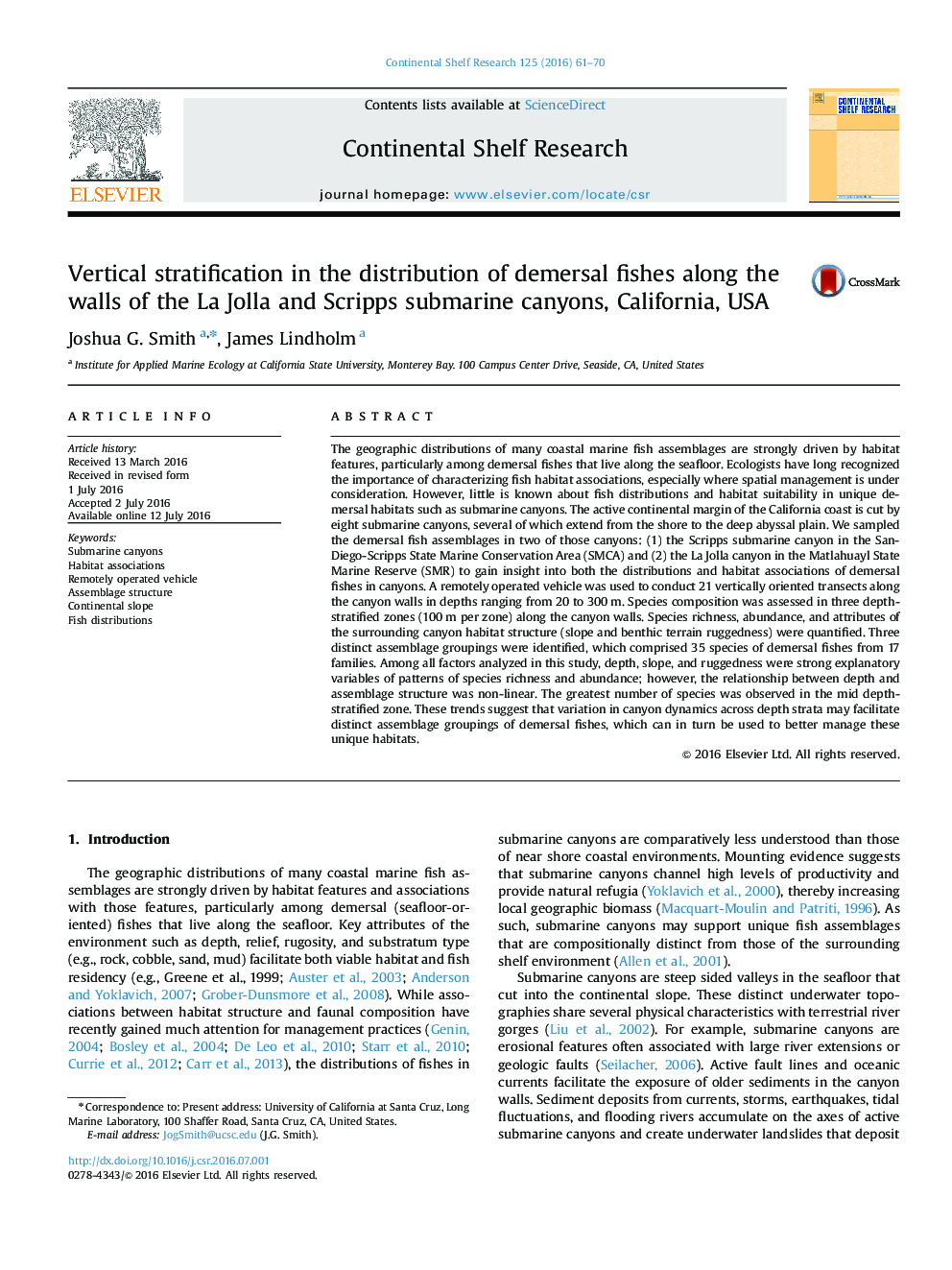| کد مقاله | کد نشریه | سال انتشار | مقاله انگلیسی | نسخه تمام متن |
|---|---|---|---|---|
| 4531576 | 1626088 | 2016 | 10 صفحه PDF | دانلود رایگان |

• Submarine canyons provide essential habitat for demersal fishes.
• Depth explains patterns of community composition along submarine canyon walls.
• Variation in canyon orientation and topography contributes to species distributions.
The geographic distributions of many coastal marine fish assemblages are strongly driven by habitat features, particularly among demersal fishes that live along the seafloor. Ecologists have long recognized the importance of characterizing fish habitat associations, especially where spatial management is under consideration. However, little is known about fish distributions and habitat suitability in unique demersal habitats such as submarine canyons. The active continental margin of the California coast is cut by eight submarine canyons, several of which extend from the shore to the deep abyssal plain. We sampled the demersal fish assemblages in two of those canyons: (1) the Scripps submarine canyon in the San-Diego-Scripps State Marine Conservation Area (SMCA) and (2) the La Jolla canyon in the Matlahuayl State Marine Reserve (SMR) to gain insight into both the distributions and habitat associations of demersal fishes in canyons. A remotely operated vehicle was used to conduct 21 vertically oriented transects along the canyon walls in depths ranging from 20 to 300 m. Species composition was assessed in three depth-stratified zones (100 m per zone) along the canyon walls. Species richness, abundance, and attributes of the surrounding canyon habitat structure (slope and benthic terrain ruggedness) were quantified. Three distinct assemblage groupings were identified, which comprised 35 species of demersal fishes from 17 families. Among all factors analyzed in this study, depth, slope, and ruggedness were strong explanatory variables of patterns of species richness and abundance; however, the relationship between depth and assemblage structure was non-linear. The greatest number of species was observed in the mid depth-stratified zone. These trends suggest that variation in canyon dynamics across depth strata may facilitate distinct assemblage groupings of demersal fishes, which can in turn be used to better manage these unique habitats.
Journal: Continental Shelf Research - Volume 125, 15 August 2016, Pages 61–70